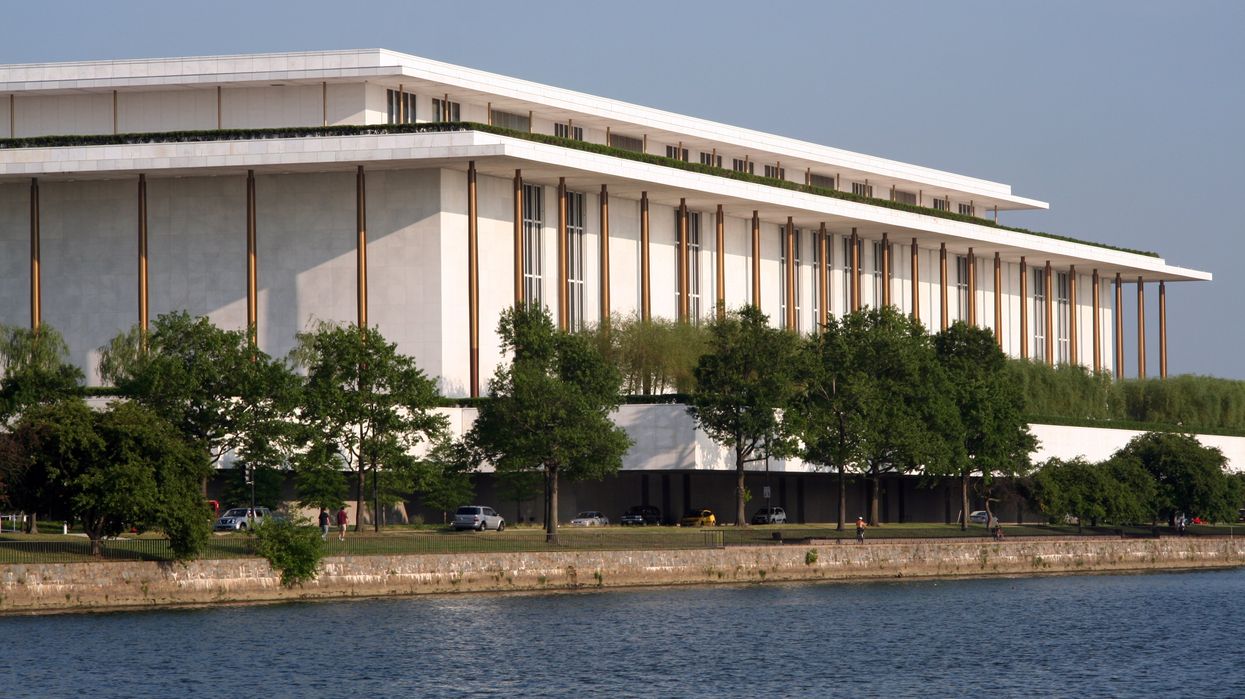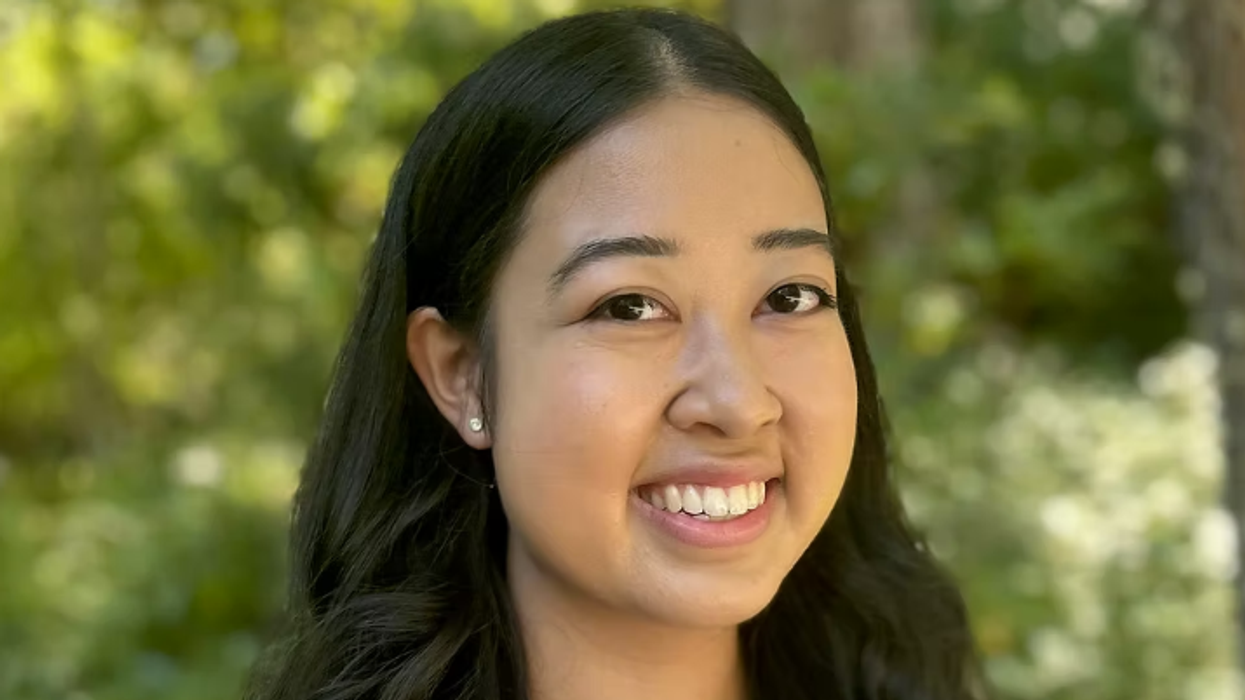Last month's headline-grabbing assertion by Republican election officials in Texas – that as many as 58,000 noncitizens may have voted illegally in the state during the past two decades – seems to be unraveling. That's bad timing for Texas Secretary of State David Whitley, who was preparing to face hostile questioning about his voter list at a state House hearing in Austin today. After Whitley's office instructed counties to give the suspect voters a month to prove their citizenship before canceling their registrations, it began notifying those local officials that thousands on its list were citizens eligible to vote. The Washington Post, noting that similar efforts to show large numbers of registrations by non-citizens have come up short in North Carolina, Florida and several other states, deconstructs the situation in Texas and concludes that: "Those touting the large numbers, almost all Republicans, say the hunt for evidence of voter fraud is necessary to protect the integrity of elections. But the pattern of overblown proclamations also shows the data is easily misinterpreted — prompting voting rights activists to accuse Republicans of using the numbers to discourage eligible voters to cast ballots." |
Site Navigation
Search
Latest Stories
Start your day right!
Get latest updates and insights delivered to your inbox.
Top Stories
Latest news
Read More

Musicians and dance companies are canceling performances in protest, adding to a widening backlash over political interference at the nation’s premier arts institution.
Getty Images, ntn
More Artists Boycott Trump‑Renamed Kennedy Center
Jan 02, 2026
The recent wave of cancellations by artists at the Kennedy Center underscores a broader and urgent question in contemporary society: the struggle between artistic autonomy and political influence. By withdrawing from their scheduled appearances, these artists are responding to the Center's controversial renaming by a new Board of Directors appointed by President Trump. This renaming, seen by many as politically motivated, has catalyzed a strong reaction. Earlier this year, at least 15 performers withdrew in protest. This forms part of a growing trend, with public resignations and statements from notable figures like Issa Rae, Rhiannon Giddens, Renée Fleming, and Ben Folds. They have all expressed concerns that the Center’s civic mission is being undermined.
More performers are visibly withdrawing from the Kennedy Center, with fan-favorite names disappearing from the roster. In recent weeks, news outlets have reported that more artists and groups have called off their upcoming shows. These include jazz drummer Chuck Redd, the jazz group The Cookers, singer-songwriter Kristy Lee, and the dance company Doug Varone and Dancers. Fans holding tickets now face the stark absence that mirrors these artists' discomfort with the renaming and what it represents politically.
The Cookers made it clear their decision was a protest. They said, "Jazz was born from struggle and from a relentless insistence on freedom: freedom of thought, of expression, and of the full human voice." Doug Varone and Dancers expect to lose $40,000 by pulling out, calling the decision "financially devastating but morally exhilarating." Kristy Lee also canceled a free concert on January 14. She was open about the impact: "I won’t lie to you, canceling shows hurts. This is how I keep the lights on. But losing my integrity would cost me more than any paycheck."
In contrast, some artists have chosen to stay and perform, citing the need to keep art accessible and promote dialogue during contentious times. One such artist, pianist John Doe, said, "While I completely understand and respect the decisions of my fellow artists, I believe that staying allows me to reach people and convey messages of unity and understanding through my music."
Trump-appointed Board members have responded to the backlash. Recently, Kennedy Center chairman Richard Grenell publicly criticized the artists who withdrew. He called them “far-left political activists” and said, “boycotting the arts to show you support the arts is a form of derangement syndrome.” News reports also mentioned that he suggested possible legal action over the cancellations.
The Kennedy Center's renaming brings up several legal issues. The Center was first named by an act of Congress, and any official change would also need congressional approval.
All these withdrawals show that performers are worried about the independence of America’s leading cultural institutions and the values they stand for. For many artists, the stage is more than just a place to perform; it is a space for free expression.
Their absence now is a form of public protest, a real loss for freedom of expression. This tradition of artistic protest connects to earlier moments in history, such as the boycotts led by Paul Robeson and Joan Baez, highlighting a recurring civic ritual in the United States where artists voice their resistance through strategic silence.
During a time of division, the arts can still bring people together, encourage reflection, and help with healing.
David L. Nevins is the publisher of The Fulcrum and co-founder and board chairman of the Bridge Alliance Education Fund.
Keep ReadingShow less
Recommended

Two sides stand rigidly opposed, divided by a chasm of hardened positions and non-relationship.
AI generated illustration
Our Doomsday Machine
Jan 02, 2026
Political polarization is only one symptom of the national disease that afflicts us. From obesity to heart disease to chronic stress, we live with the consequences of the failure to relate to each other authentically, even to perceive and understand what an authentic encounter might be. Can we see the organic causes of the physiological ailments as arising from a single organ system – the organ of relationship?
Without actual evidence of a relationship between the physiological ailments and the failure of personal encounter, this writer (myself in 2012) is lunging, like a fencer with his sword, to puncture a delusion. He wants to interrupt a conversation running in the background like an almost-silent electric motor, asking us to notice the hum, to question it. He wants to open to our inspection the matter of what it is to credit evidence. For believing—especially with the coming of artificial intelligence, which can manufacture apparently flawless pictures of the real, and with the seething of the mob crying havoc online and then out in the streets—even believing in evidence may not ground us in truth.
Medical trials could produce no double-blind evidence that the failure to relate to each other causes obesity or heart disease, even if the latter is taken as a metaphor for a non-physiological ailment. The recent declaration by the Surgeon General of a link between heart disease and loneliness, though, is telling. The inability to listen and be heard is causing personal harm and, ipso facto, societal harm. Our perception of the other based solely on party, on race, on class – on abstractions – is preventing us from addressing national problems and affecting our physical health. Has our addiction to an abstraction like “individual freedom” produced vaccine hesitancy and the refusal of masks?
What else has happened in America since those opening sentences were written in May 2012?
- In 2012, eight “gun incidents” in schools; in 2021 two hundred forty-eight. (In 2012, 7 injured and 34 killed; in 2022, 118 injured and 47 killed.)
- In houses of worship, a total of 54 killed and 32 wounded
- Continuing incidents of mass killing, not only with guns, spiking in the last few years
- In 2017 in Charlottesville, the Unite the Right rally, where violence erupted on a college campus and then in a theretofore peaceful small city
- Riots after the killing of George Floyd
- January 6th civil violence in the attempted interruption of governmental process
- The hammer attack on Paul Pelosi
- Twice as many suicides as homicides this year.
- Rates of gun related-homicide more than six times as high as the next-highest country (Portugal)
- Increased and increasing tempo of mass shootings
- The murder of a state legislator, apparently for belonging to a political party
Of course, all these events may exemplify correlation, not causation. The causes of civil violence, complex and interrelated, depend on factors seemingly remote from personal grievance, like geography and demographics. But though some of them involve masses of people acting in concert, their grievance stoked by social media’s monetization of outrage, what the opponents of gun control trumpet relentlessly is true: guns don’t kill people; people kill people. We must recognize individual responsibility and choice. Even with suicide, though, private agony grows from the failure of relationship. We make choices in a context, a milieu inexorably social. What is conditioning our social milieu, the air we’re all breathing? Call it a hypothesis, then, that the national “organ of relationship” has atrophied to the point of failure, at least among a substantial portion of the populace.
How are we to restore the sane common ground we may walk on with our fellows? Can we avoid the fate of the dinosaurs? As their immense size worked against them after a meteor impact reduced sunlight, our reliance on perception instead of relationship now threatens our survival. Under perception’s sway, certain of our truth, we manipulate one another as instruments—whence “cancel culture,” “debate” with hardened positions unheard by the other side, and violence seen as virtue. We get all pissy if an academic dismisses our most fervently held positions as dependent on a context for their truth..
It has been incontrovertibly demonstrated that what you are certain you see in front of you depends on assumptions you bring to the hermeneutic act of seeing. That is, the nature of an act, the meaning of a speech, as Claudine Gay so confidently asserted, depends on the context. This is not an academic matter. The mechanism of perception is poisoning our planet and our polity.
To expose that mechanism for what it is, and to steer ourselves consciously and conscientiously toward a way of being together different than the one perception enables and enforces, we need the milieu of Buber’s “meeting,” between a present and particular I and You—a force field where each of the participants turns to the other with the intention of establishing “a living mutual relation between himself and them.” We need a milieu where opposites may encounter each other in a context unconditioned by perception’s absolutism, outside the narratives that perception spins out of assumptions.
Braver Angels has the best-developed infrastructure to support such a milieu. And there are now several hundred kindred processes, like https://www.wisedemocracy.org/3-wisdom-council-pro... (See the growing list at ListenFirst.org.)
But we need to share in actual physical being together as well as intellectual (verbal) inquiry and debate. If not bowling leagues, then shooting ranges, fitness centers. (Shared sweat counts.) Hunt clubs. Chess clubs. Hotel lobbies. Elevators. Have you ever encountered a person coming down the opposite escalator as you ascend? The opposite of visual perception is eye contact.
The Meetings of Opposites curriculum is designed to bring into presence, among people with irreconcilable opinions, the actual experience of common ground. In several sessions, we expose the mechanism of perception for what it is, we catch ourselves if we fall under its domination, and we consciously and conscientiously steer ourselves toward being together differently than perception enables and enforces.
In each session of a meeting of opposites, we:
- Investigate visual perception to reveal the mechanism which produces optical illusions.
- Examine a local dispute with high voltage to show the same mechanism at work.
(The optical illusion we live in now is Us-Against-Them.)
- Introduce a philosophical framework to distinguish perception from being-together.
- Participate in group challenges, adapted from Outward Bound, to experience a different way of being together than perception allows and enforces.
These workshops replace positionality with relationship, dialogue not between positions but between persons. https://meetingsofopposites.org
It is late for America. We've been working as opposites — canceling each other — for so long that the American Idea is in jeopardy. We must here and now be confronted bodily, physiologically, in living, real-time instances of the true meeting Buber intended, so that we have not position-taking but moral sustenance, not an abstraction but an actual country to live in. There’s a big difference between the emptiness of a slogan — “The American People” — and the actuality of living as an American person among others. Common ground is a matter of living together, not of agreement in opinions. Narrative-driven solidarity will kill us.
Henry McHenry Jr., Founder of Meetings of Opposites and former Outward Bound instructor, grew up in Birmingham, Alabama, in the 1950s, went to Yale, holds a PhD in English Pedagogy from UVa, and teaches Shakespeare for OLLI in Charlottesville.
Keep ReadingShow less
Youth Leaders Fighting Gendered Harms of AI Deepfakes
Jan 02, 2026
When OpenAI launched ChatGPT, it sparked Anika Dugal’s interest in tech policy and safety. As a junior in high school, Anika became aware of the harms of AI – from deepfakes to algorithmic bias – and she was inspired to take action. Grounded in a passion for women’s rights work, Anika was alarmed to learn about the manifold gender-based inequities around AI. Still, she could find no organizations focusing on it. It was then that Anika started the Center for Gender Equitable AI (CGEAI), then known as Girls for Algorithmic Justice, a nonprofit, youth-led organization working to address the gendered harms emerging from artificial intelligence and other technologies.
Since its founding in 2022, CGEAI has launched more than 20 chapters at schools worldwide, engaged almost 200 volunteers globally, created over 50 educational resources, and reached over 4,000 young people. CGEAI has sent youth representatives to convenings such as the UN Sustainable Development Goals Action Weekend, the Prudential Emerging Visionaries Summit, the Intercollegiate Bay Area AI Safety Retreat, and the Women in Engineering Conference.
In 2024, the organization launched its first campaign, #StopExplicitDeepfakes, to raise awareness of the harms of deepfakes and share information and tools to mitigate them.
The worldwide effort to confront the rise of AI-generated, nonconsensual explicit imagery garnered over 43,000 views, produced a 20+ page paper on guidance for school policies to address explicit deepfakes, submitted input to the UN AI Advisory Body, and even involved youth meeting one-on-one with Congressional representatives to share their perspectives on deepfakes and to inform meaningful change at the federal level. The campaign included the publication of an op-ed in The San Francisco Chronicle by CGEAI leaders Emma Le and Stephanie Choi, which was read and recognized by the San Francisco City Attorney. #StopExplicitDeepfakes also included an art competition that encouraged students around the world to convey their experiences through poetry, literature, and visual art.
Anika is deeply proud of the #StopExplicitDeepfakes campaign, sharing, “I first came across the issue about a year ago in a powerful op-ed in the New York Times by Nicholas Kristof. The op-ed described the innumerable girls and women victimized by explicit deepfakes and an utter lack of action around the issue. I was a senior in high school at the time, and procrastinating doing my homework by skimming the news. I remember sitting numb at my computer after reading the op-ed, then turning to my mom to tell her about it, outraged.
“The number of victims of explicit deepfakes is quite literally in the millions. That op-ed first inspired sadness, then outrage, and then a resolve that powered me through working on #StopExplicitDeepfakes last semester,” Anika said.
This semester, CGEAI is focused on developing resources to help high schools support their impacted students and thinking about how they can fill the critical knowledge gaps around explicit deepfakes.
“It’s hard to balance nonprofit work with the all-consuming nature of college life, but I know that this issue is important, awful, and underaddressed. It’s tangible harm like this that compels me to keep working on CGEAI,” Anika said.
According to Anika, one of the most rewarding moments of the #StopExplicitDeepfakes campaign was their art competition.
“I remember opening the Google Form and being incredibly moved by the submissions to our competition,” she said.
“The students who submitted pieces were vulnerable about their experiences or fears around AI-driven online harassment, and conveyed it so powerfully. Also, I’m glad to be seeing more attention paid to the issue–this year, explicit deepfakes were a key focus of the UN’s ‘16 Days Against Gender-Based Violence’ campaign.”
In a world in which AI continues to evolve rapidly, the organization, too, responds to new developments in this technology.
“CGEAI plans to expand in what we call a ‘star-shape’ to address issues in the nexus of gender equity and emerging technology through research, education, advocacy, and more,” Anika said.
“Our goal is to work where it’s most needed, and to fill the vital gaps that leave victims unsupported and decision-makers without key information. This semester, we’ve been focused on expanding our team through recruitment, establishing partnerships and finding mentors, and prepping some exciting initiatives for launch next semester. CGEAI is the furthest thing from an individual effort; my work would not be possible without the help of so many volunteers and mentors. Working alongside profoundly hardworking and kind people has been one of my favorite parts of this organization.”
Anika is now a sophomore Angier B. Duke Scholar, Duke Technology Scholar, and Laidlaw Scholar at Duke University studying computer science and public policy, and there’s no sign of her or the Center slowing down as they work to reach more people across the world through their research, education, and awareness programs, and community listening projects.
This is the second in an ongoing monthly series highlighting the inspiring work of high school-aged civic innovators. Through the mentorship and guidance provided by Civics Unplugged, young people are provided the skills, mentorship, and community needed to create impactful solutions to the problems that matter most. Since Civic Unplugged’s founding in 2020, they have graduated more than 5,000 Fellows worldwide from our tuition-free programs and provided $1.5 million in direct funding to Fellows’ initiatives. To learn more, please visit civicsunplugged.org.
The Fulcrum is committed to nurturing the next generation of journalists. To learn about the many NextGen initiatives we are leading, click HERE.
Keep ReadingShow less
How Gavin Newsom’s Prop 50 is Reshaping California - For Better or For Worse
Jan 02, 2026
Prop 50 is redrawing California’s political battlefield, sparking new fears of gerrymandering, backroom mapmaking, and voters losing their voice. We cut through the spin to explain what’s really changing, who benefits, and what it could mean for competitive elections, election reform, and independent voters. Plus, Independent CA-40 candidate Nina Linh joins us to spell out how Prop 50’s map shifts are already reshaping her district - and her race.
Listen to this episode and more from Independent Voter Project on Spotify and Apple Music.
How Gavin Newsom’s Prop 50 is Reshaping California - For Better or For Worse was originally published by Independent Voter News and is republished with permission.
Keep ReadingShow less
Load More
















